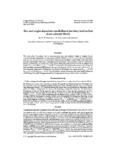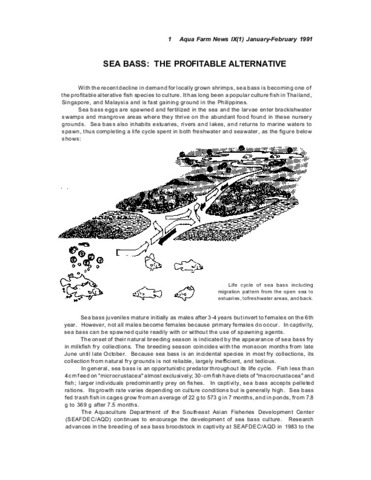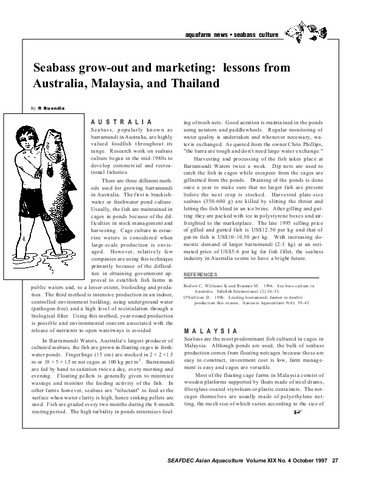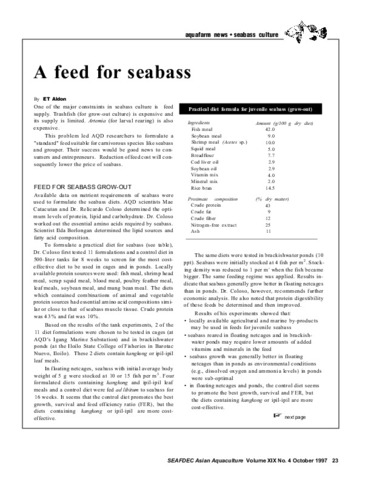Size- and weight-dependent cannibalism in hatchery-bred sea bass (Lates calcarifer Bloch)
- Global styles
- MLA
- Vancouver
- Elsevier - Harvard
- APA
- Help

View/
Date
1991Page views
1,825ASFA keyword
AGROVOC keyword
Taxonomic term
Metadata
Show full item record
Share
Abstract
The relationship of predator size to maximum prey size, and predator weight to weight of prey consumed among cannibalistic sea bass (Lates calcarifer Bloch) in a hatchery were assessed. Maximum prey size was computed from morphological measurements (predator mouth width, prey body depth and fish total length), while prey consumption was determined from predators kept in experimental beakers and fed only prey sea bass for a 7-day period. Maximum prey size was 61–67 % of predator total length \((TL_{prey} = 0.5944 TL_{predator} + 0.0724)\). Gut dissection of predators showed that size of ingested prey increased with increasing predator size not exceeding the maximum size limit indicated by the above equation. Daily prey consumption of predators in the beakers was expressed as \(W_{Prey} = -0.2407\; W_{predator^{2}}+ 0.7697W_{predator}-0.1141\). During hatchery rearing of sea bass, fish with length differences of more than 33 % must be separated and food of appropriate size provided to limit cannibalism.
Suggested Citation
Parazo, M. M., Avila, E. M., & Reyes, D. M., Jr. (1991). Size- and weight-dependent cannibalism in hatchery-bred sea bass (Lates calcarifer Bloch). Journal of Applied Ichthyology , 7(1), 1-7. https://doi.org/10.1111/j.1439-0426.1991.tb00588.x
Type
ArticleISSN
1439-0426Collections
- Journal Articles [1258]
Related items
Showing items related by title, author, creator and subject.
-
Sea bass: The profitable alternative
Southeast Asian Fisheries Development Center, Aquaculture Department (Aquaculture Department, Southeast Asian Fisheries Development Center, 1991) -
Seabass grow-out and marketing: lessons from Australia, Malaysia, and Thailand
Buendia, Romeo (Aquaculture Department, Southeast Asian Fisheries Development Center, 1997) -
A feed for seabass
Aldon, E. T. (Aquaculture Department, Southeast Asian Fisheries Development Center, 1997)One of the major constraints in seabass (Lates calcarifer) culture is feed supply. Details are given of work conducted at AQD regarding the formulation of a 'standard' feed suitable for carnivorous species like the seabass ...





